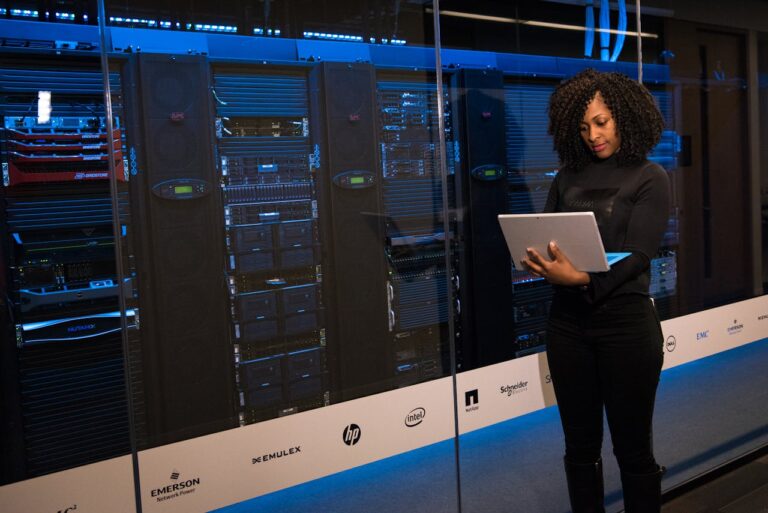Over the past few decades, Enterprise Resource Planning (ERP) solutions have been helping businesses manage their operations efficiently through data centralization and automation. However, due to the dynamic nature of businesses, these once-efficient systems have become legacy systems.
Their limitations are becoming increasingly apparent. The need for real-time information, seamless scalability, and enhanced automation cannot be met by conventional ERP systems such as SAP ECC. Companies have started to transform into intelligent enterprises by integrating next-gen ERP systems, and thus the ERP market is expected to reach $96 billion by 2032.
Brownfield conversion with SAP S/4HANA is one such next-gen solution to overcome the limitations of legacy ERP systems and here is how it is getting on.
Table of Contents
ToggleLimitations of Legacy ERP System and SAP S/4HANA’s Solution
The growing need for flexibility, near real-time processing, and smart systems is pushing organizations to rethink their ERP strategy. Legacy systems are not very flexible to adapt quickly to change and may cause operational drawbacks, slow processes, and limited innovation.
-
Lack of Real-time Data Processing
Legacy ERP systems are characterized by their dependence on batch processes. This means that data is processed in specific time frames making it difficult to access real-time information. This delay can cause problems where a quick reaction to changes in the market environment is required, leading to inefficiencies in decision-making and resource allocation.
Solution:
SAP S/4HANA leverages its in-memory database to overcome this challenge. It offers real-time data processing and predictive analytics, allowing businesses to analyze data insights in real-time, and respond to dynamic market demands effectively.
SAP S4HANA brownfield conversion helps in overcoming the time lag which is associated with batch processing and the companies can make faster decisions with the help of real-time data. Consumers also experience increased satisfaction, firms gain higher business performance, and flexibility of operations.
-
Data Structure Complexity
Traditional ERP systems often have complex data structures that create information silos within the organization. These silos hinder data access and cross-functional collaboration. Besides, data silos make it hard to facilitate interoperation between different departments and result in low efficiency and slow decision-making.
Solution:
SAP S/4HANA enables intelligent enterprises to reduce data complexity through the unification of data across the organization. It means that there is no need for data replication and silos, ensuring that the teams across the organization are working with the same data. Brownfield conversion fosters a cohesive business environment where stakeholders can easily share and utilize data to drive business value and, smoother workflows.
-
Inefficient Manual Processes
The issue is that many business processes in the legacy ERP systems remain manual to some extent. Handling processes like data entry, report generation, and business operational workflows manually, will slow down the processing speed and increase the chance of errors. This inefficiency causes slow work rates and hinders creativity, thus creating a challenge for firms to compete with other firms that are employing automation and AI systems.
Solution:
SAP intelligent enterprises leverage new technologies such as artificial intelligence, machine learning, and the Internet of Things (IoT) to mitigate the challenges of manual processing. SAP S/4HANA automates repetitive tasks, predicts outcomes, and enhances overall process efficiency. Intelligent automation helps organizations address processes in a better way while reducing operational costs and boosting output quality.
-
Outdated User Interfaces
The user interfaces of legacy ERP systems are ineffective and complex, leading to difficult system navigation and reduced implementation. These systems are not easy to use by the employees and that results in extended training time, lower productivity, and employees’ reluctance to adopt new processes. This lack of user-friendliness also turns into an issue of productivity and prevents an overall improvement of the system.
Solution:
SAP S4HANA brownfield conversion introduces SAP FIORI, a modern and user-friendly interface that is designed to enhance the user experience across devices, including mobile. FIORI provides employees with personalized and role-based access to relevant applications. This reduces the system navigation complexity while increasing productivity. SAP S/4HANA helps businesses improve employee engagement and operational efficiency with its seamless, mobile-friendly user experience.
-
Scalability Issues
Over time, as businesses expand their operations geographically, traditional ERP solutions prove inadequate for their growing needs. Organizations find it difficult to transform into new business models, address growing workload demands, or expand into new markets because of the rigid architecture of traditional systems. This can stifle growth and delay strategic initiatives.
Solution:
Intelligent enterprises with SAP S/4HANA possess enough flexibility to support the growing needs of businesses. Its cloud-based options provide the ability to scale operations effectively. Organizations can handle large data volumes, complex processes, and diverse operational needs within the cloud systems. With SAP S/4HANA, businesses can achieve global scalability, enabling them to pursue growth opportunities without worrying about system limitations.
Bottom Line
If organizations still rely on legacy ERP systems like SAP ECC, they are at risk of falling behind due to the aforementioned limitations. Transitioning to SAP intelligent enterprise becomes essential for companies to thrive in a rapidly changing market.
For organizations looking to upgrade from SAP ECC, the brownfield conversion offers a strategic path with minimal disruption. This method allows businesses to retain their historical data, configurations, and customizations while embracing the transformative capabilities of SAP S/4HANA.
The brownfield conversion offers a smooth transition by maintaining continuity and reducing the risks associated with complete system overhauls. With SAP S/4HANA, businesses can move beyond the limitations of legacy systems and embrace continuous innovation and growth without starting from scratch.











